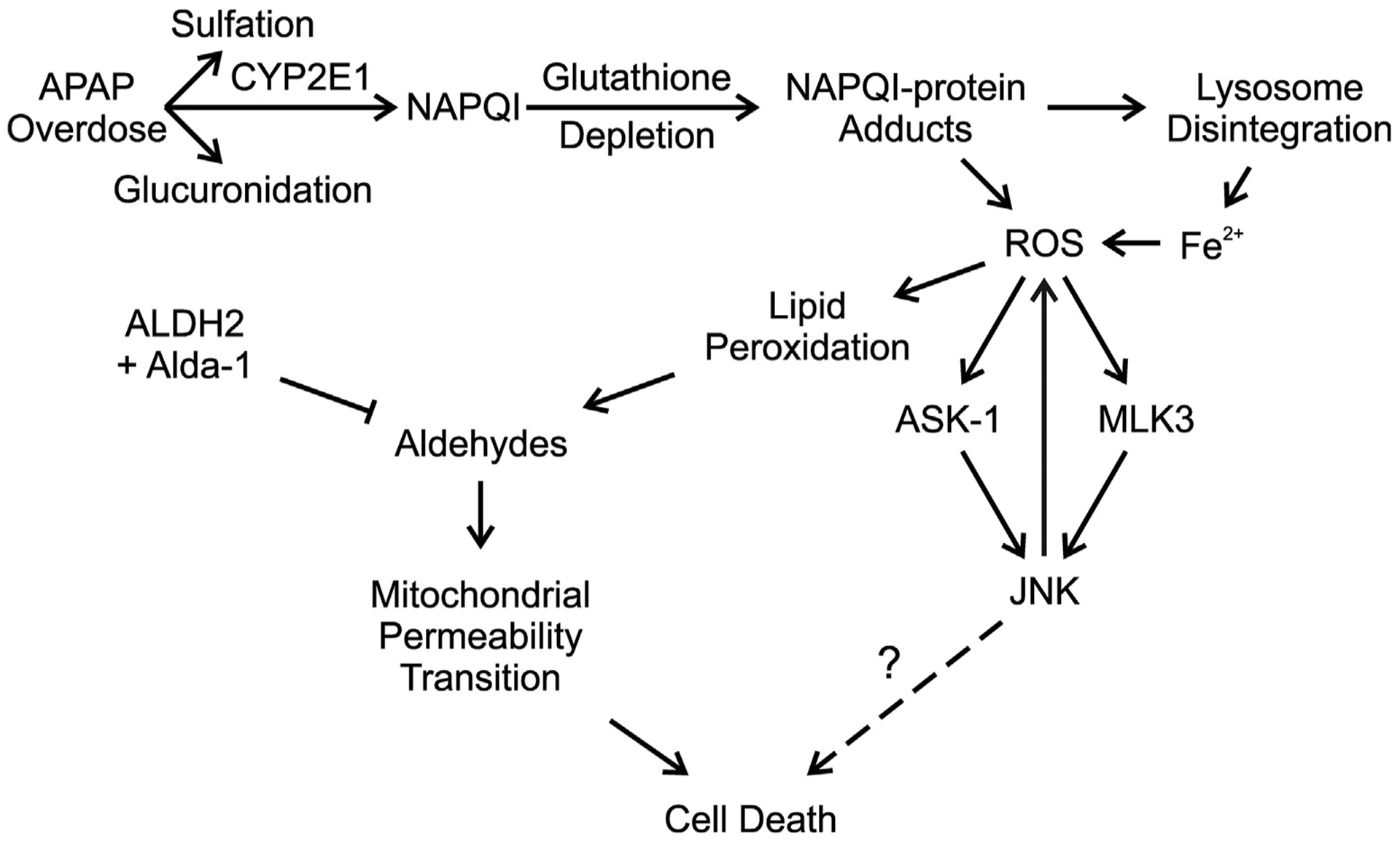Fig. 7.

Aldehyde dehydrogenase-2 activation by Alda-1 decreases acetaminophen hepatotoxicity by detoxifying aldehydes and preventing the mitochondrial permeability transition. An overdose of APAP saturates the sulfation and glucuronidation pathways causing a greater proportion of APAP to be metabolized to NAPQI. Excess NAPQI causes depletion of GSH, leading to the formation of NAPQI protein adducts in mitochondria and promoting lysosomal disruption with release of Fe2+, which translocates into mitochondria. The resulting increase of iron-catalyzed mitochondrial ROS formation causes JNK activation via the ASK1 and MLK3 pathways. Activated JNK also promotes increased mitochondrial ROS formation, which feeds back to cause more stimulation of ASK1 and MLK3. ROS formation then causes lipid peroxidation, leading to aldehyde formation. These aldehydes promote onset of the MPT and cell death. Detoxification of aldehydes by ALDH2 activated by Alda-1 decreases cell death by preventing the MPT.
